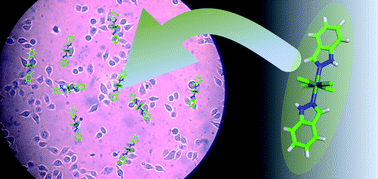Cellular uptake is being widely investigated in the context of diverse biological activities of metal compounds on the cellular level. However, the applied techniques differ considerably, and a validated methodology is not at hand. Therefore, we have varied numerous aspects of sample preparation of the human colon carcinoma cell line SW480 exposed in vitro to the tumor-inhibiting metal complexes cisplatin and indazolium trans-[tetrachlorobis(1H-indazole)ruthenate(III)] (KP1019) prior to analysis with ICP-MS, and the results were found to be tremendously influenced by adsorption to the culture dishes. Adsorption to culture plates increases linearly with the concentration of KP1019, depends on the protein content of the medium, the duration of contact to protein-containing medium prior to drug addition and the hydrophilicity/lipophilicity of the compound. For varying degrees of cell confluence, adsorption of Ru hardly differs from cell-free experiments. Desorption from the plates contributes to total Ru detected in dependence on the cell harvesting method. Desorption kinetics for lysis in HNO3 and tetramethylammonium hydroxide (TMAH) are comparable, but TMAH is a more potent desorbant. Sample storage conditions prior to analysis influence significantly the recovery of analyte. Protocols using cell lysis in the culture plate without proper corrections run the risk of producing artefacts resulting from metal adsorption/desorption to an extent comparable with the actual cellular content. However, experimental protocols reported in the literature frequently do not contain information whether adsorption or blank correction were performed and should be regarded with caution, especially if lysis was performed directly in the culture dishes.

You have access to this article
 Please wait while we load your content...
Something went wrong. Try again?
Please wait while we load your content...
Something went wrong. Try again?


 Please wait while we load your content...
Please wait while we load your content...